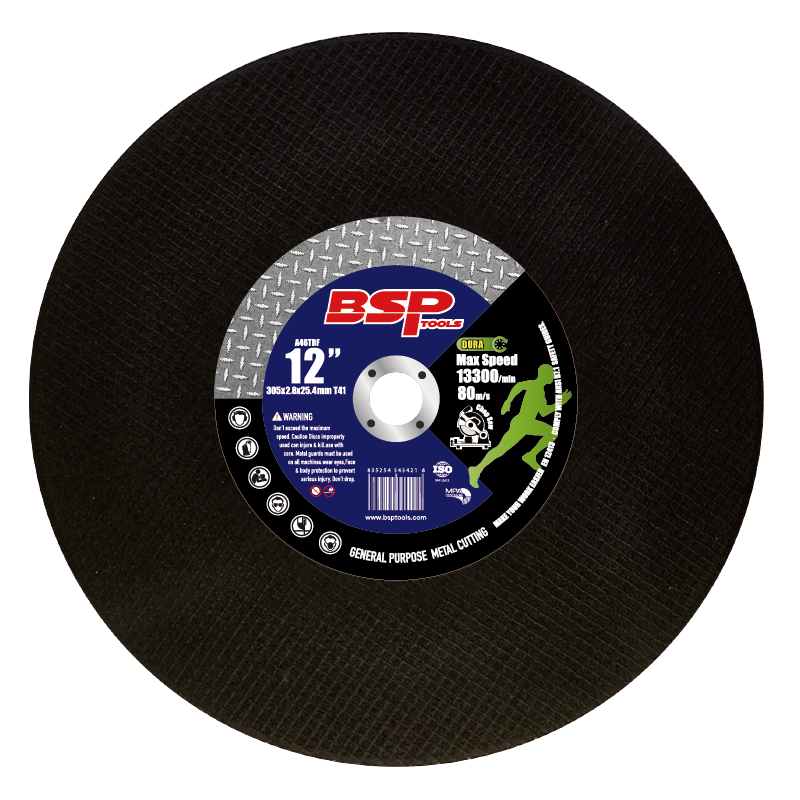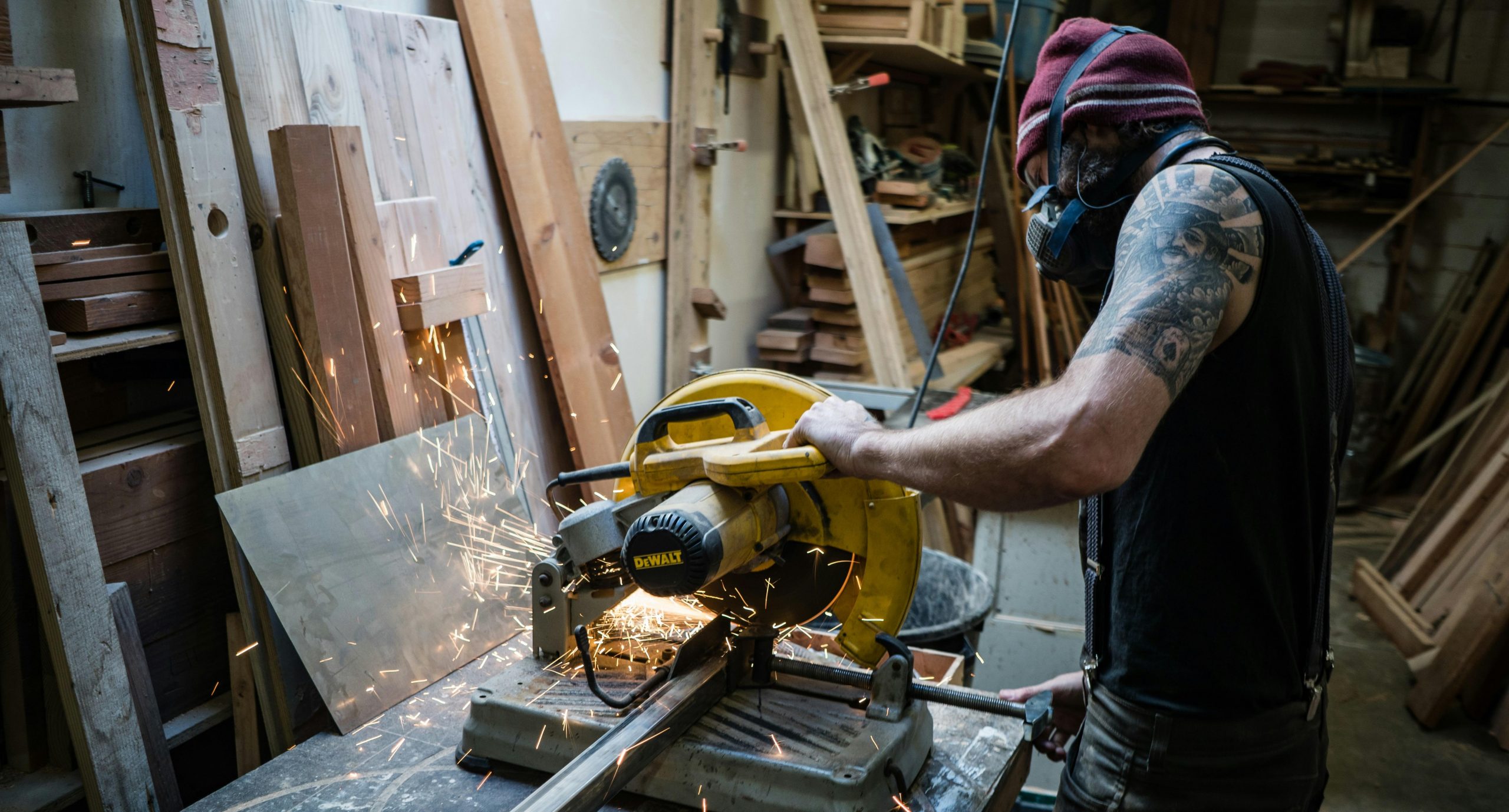Cutting metal with large cut-off wheels is a standard practice across various industries, from automotive repair to construction and manufacturing. However, these tools can pose significant risks if not handled correctly. Large conventional cut-off wheels, particularly those 14 inches or larger, require careful handling and adherence to strict safety protocols to prevent accidents, equipment damage, and injuries. This guide explores the tools, preparation steps, cutting techniques, and safety considerations essential for effectively and safely cutting metal with large conventional cut-off wheels.
Understanding Large Cut-Off Wheels and Their Applications
Large cut-off wheels, also called abrasive discs, are powerful tools used to cut various metals, including steel, aluminum, cast iron, and stainless steel. They are typically mounted on powerful, fixed machines or hand-held saws, such as chop saws, angle grinders, or stationary cut-off machines. Their primary advantage is their ability to produce clean, precise cuts quickly and efficiently.
However, their size and high RPM can create dangerous conditions if safety measures are ignored. Unlike smaller abrasive wheels, large cut-off wheels generate significant force and friction, increasing the risk of disc breakage, sparking, and material kickback. Understanding these tools’ capabilities and limitations is critical to maintaining a safe working environment.
Safety Gear Essentials
Before starting any metal cutting job, proper safety gear is essential. Since large cut-off wheels can produce sparks, sharp metal shards, and even occasional debris, wearing protective equipment is mandatory. Essential safety gear includes:
- Safety Goggles or Face Shield: Eye protection is crucial to guard against flying metal fragments or sparks.
- Gloves: Cut-resistant gloves provide grip and protect hands from sharp edges.
- Hearing Protection: The noise level from cutting metal with large cut-off wheels can be intense, necessitating ear protection.
- Dust Mask or Respirator: Metal cutting can produce dust or fumes, particularly when cutting certain metals.
- Long-Sleeve Clothing and Apron: Cover exposed skin to protect from sparks and hot metal particles.
- Steel-Toed Boots: Protect feet from falling metal pieces or tools.
Selecting the Right Cut-Off Wheel for Metal Cutting
Choosing the correct cut-off wheel for your specific cutting application is essential for safety and efficiency. Here are some key considerations:
- Wheel Diameter: Larger wheels can cut deeper but also require more power. Ensure that your machine is compatible with the wheel size you intend to use.
- Material Compatibility: Use wheels designed specifically for the type of metal you’re cutting. For example, some wheels are optimized for stainless steel, while others are better suited for ferrous or non-ferrous metals.
- Abrasive Material: Common abrasives include aluminum oxide for steel and zirconia or ceramic for tougher metals. Select the abrasive type that best matches the material’s hardness.
- Wheel Thickness: Thinner wheels provide finer cuts, while thicker wheels offer greater durability but may leave a rougher edge. Choose the right thickness based on precision and durability needs.
- RPM Rating: Always use a wheel with an RPM rating that matches or exceeds your tool’s speed. Exceeding the rated RPM can lead to wheel breakage.
Preparing the Work Area
An organized and clutter-free workspace is fundamental to ensuring a safe cutting environment. When setting up:
- Secure the Workpiece: Use a vise or clamp to stabilize the metal piece being cut. This prevents movement during cutting, which can cause wheel binding or kickback.
- Clear Obstacles: Remove any unnecessary tools, materials, or objects from the area.
- Check Ventilation: Cutting metal produces fumes and dust, especially with larger wheels. Ensure adequate ventilation, particularly in enclosed spaces.
- Fire Safety Measures: Since metal cutting generates sparks, keep flammable materials away, and have a fire extinguisher readily accessible.
Machine Inspection and Setup
Inspecting your cutting machine and wheel before each job can prevent unexpected equipment failures. Follow these steps to confirm your equipment is in proper working order:
- Inspect the Cut-Off Wheel: Check for cracks, chips, or other signs of damage. A damaged wheel is a severe safety hazard and should never be used.
- Mount the Wheel Correctly: Ensure the wheel is securely mounted to prevent wobbling or slipping. Improper mounting can lead to unbalanced rotation, which increases the risk of breakage.
- Check Guard Placement: Ensure that all guards are in place and secure. These guards are crucial for protecting against debris and sparks.
- Examine Power Connections: For electric tools, inspect power cords for frays or cuts. Ensure the power supply is grounded correctly to avoid electrical hazards.
- Test Run: Before starting the actual cut, run the machine briefly without load to ensure the wheel spins smoothly without vibrations.
Cutting Technique for Optimal Safety and Efficiency
Once your equipment and work area are set up, use the correct cutting technique to ensure safe and precise cuts. Here’s a step-by-step approach:
- Position Yourself Correctly: Stand slightly to the side of the cut-off wheel, not directly behind it. This position minimizes the risk of injury if the wheel breaks or the material kicks back.
- Start the Cut Smoothly: Allow the wheel to reach full speed before initiating the cut. Bring the wheel into contact with the metal slowly to avoid sudden impact, which could cause the wheel to bind or shatter.
- Apply Steady Pressure: Use a consistent, moderate amount of pressure. Pressing too hard can cause the wheel to overheat, while applying too little pressure will slow down the cutting process.
- Avoid Side Load: Only apply pressure in the cutting direction, avoiding any side-to-side force, as this can weaken or break the wheel. Large wheels are designed for straight cuts and cannot handle lateral pressure well.
- Control the Tool Firmly: Hold the tool with both hands, ensuring you maintain complete control. Even with a stable workpiece, vibrations and forces during cutting require firm handling to maintain precision.
- Maintain a Cool Down Interval: When cutting thicker metals, periodically lift the wheel out of the cut to allow it to cool down. Continuous cutting can overheat the wheel, increasing the risk of breakage and reducing its lifespan.
Post-Cutting Safety Steps
After completing the cut, there are essential safety measures to finalize the job:
- Wait for the Wheel to Stop: Allow the wheel to come to a complete stop before setting the tool down. Placing a spinning wheel on a surface or letting it rest on the workpiece can cause damage and accidents.
- Inspect the Cut-Off Wheel: After each job, inspect the wheel for any signs of wear, cracks, or damage. Replace it if it shows any indications of wear.
- Clean the Workspace: Remove metal shavings, sparks, and dust to maintain a safe and organized work area. Discard any damaged wheels and properly store the tool for future use.
Avoiding Common Risks and Mistakes
Working with large cut-off wheels presents specific risks that can be managed with the right knowledge and caution:
- Overheating: Avoid overheating by maintaining a moderate cutting speed and taking breaks as needed. Overheated wheels are more prone to breakage and produce rougher cuts.
- Improper Wheel Selection: Using a wheel not rated for the material or machine can lead to poor performance or dangerous situations. Always match the wheel with the machine RPM and metal type.
- Ignoring Safety Gear: Even experienced users may occasionally skip safety gear, but the risk of injury from a single piece of flying metal or dust can be significant. Wearing safety gear should always be a priority.
- Inadequate Workpiece Support: Always ensure the metal is firmly secured. Unsupported metal can shift or fall, causing the tool to bind or kick back.
Additional Tips for Safe Operation
Here are a few extra tips to enhance safety when cutting metal with large cut-off wheels:
- Store Wheels Properly: Keep wheels in a dry area away from direct sunlight and moisture. Dampness can weaken the wheel’s integrity, and prolonged exposure to sunlight can degrade the resin that binds the abrasive particles.
- Replace Worn Wheels: Old, cracked, or worn wheels are hazardous. Replace wheels at the first sign of wear to prevent accidents.
- Stay Focused: Distractions can lead to mistakes, so keep your attention on the task. Do not use the tool if you feel tired or unfocused.
- Follow Manufacturer’s Guidelines: Always adhere to the machine and wheel manufacturer’s safety instructions, maintenance schedules, and recommended operational procedures.
Conclusion
Cutting metal with large conventional cut-off wheels can be safe and efficient when proper precautions and techniques are followed. Prioritizing safety by wearing protective gear, selecting the right wheel, inspecting the equipment, and adopting correct cutting methods can prevent accidents and ensure quality cuts. Remember, each step of preparation, cutting, and post-cutting care contributes to a safer, more productive work environment. By respecting the power of these tools and consistently practicing safe handling, you’ll protect yourself and others while achieving high-quality results.


